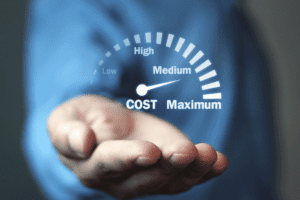As someone who has spent years working in ecommerce, I can attest to the importance of pricing strategy in maximizing revenue. Pricing can be a complex and nuanced subject, and getting it right requires a deep understanding of both customer behavior and market dynamics.
Fundamentals
At its core, pricing strategy in ecommerce is about finding the sweet spot between what customers are willing to pay for a product or service and what will generate the most revenue for the business. It’s a delicate balancing act that requires constant attention and tweaking, as market conditions and customer preferences can change rapidly.
One of the keys to effective pricing strategy is understanding pricing psychology. How customers perceive value and price can have a huge impact on their purchasing decisions. Factors like the perceived quality of a product, the perceived benefits it offers, and the emotions it evokes can all influence how much a customer is willing to pay.
Of course, there are also more tangible factors that come into play when determining pricing strategy. Price elasticity of demand, or how responsive customers are to changes in price, is a key consideration. If a product has high price elasticity, a small change in price can have a big impact on demand. Conversely, if a product has low price elasticity, changes in price are unlikely to have much of an effect on demand.
Competitor pricing is another important factor to consider. If a business is significantly more expensive than its competitors, it may struggle to attract customers. On the other hand, if a business is significantly cheaper than its competitors, it may be perceived as offering lower quality products or services.
Customer segmentation is also critical when it comes to pricing strategy. Different customer groups may be willing to pay different prices for the same product or service, depending on factors like their income, age, and buying habits. By understanding these differences and segmenting customers accordingly, businesses can tailor their pricing strategy to maximize revenue from each group.
Finally, pricing automation tools and data-driven decision making can help businesses optimize their pricing strategy for maximum revenue. By constantly monitoring market conditions and customer behavior, businesses can adjust prices in real time to ensure they are always in the sweet spot.
Overall, pricing strategy is a critical component of any successful ecommerce business. By understanding pricing psychology, factors affecting pricing strategy, and different pricing strategies, businesses can optimize their pricing for maximum revenue and stay competitive in a crowded market.
Understanding the Psychology of Pricing
Pricing psychology is a crucial aspect of pricing strategy. Understanding how consumers perceive and respond to different price points is essential to optimizing your ecommerce pricing strategy. Here are some key principles of pricing psychology to keep in mind:
- Anchoring: People tend to rely heavily on the first piece of information they receive when making decisions. As such, the initial price you offer can have a significant impact on how customers perceive the value of your products.
- Framing: The way a price is presented can also impact how it’s perceived. For example, $50 per month may seem more expensive than $600 per year, even though they’re the same price.
- Perception of value: Consumers make purchasing decisions based on the perceived value of a product. Understanding what factors influence a customer’s perception of value can help you price your products more effectively.
- The power of context: People don’t just evaluate prices in a vacuum; they also consider the context in which they’re presented. For example, a product might seem like a great deal if it’s compared to a more expensive alternative, but overpriced if it’s compared to a similar product that’s cheaper.
By keeping these principles of pricing psychology in mind, you can create pricing strategies that are more likely to resonate with customers and drive sales.
Understanding Customer Psychology in Pricing Strategy
One of the most important factors to consider when it comes to pricing strategy in ecommerce is customer psychology. The way customers perceive the value of your products and how they respond to your pricing can significantly impact your revenue.
First and foremost, it’s important to understand that customers don’t always make rational decisions when it comes to pricing. In fact, research shows that customers are often influenced by psychological factors such as anchoring, framing, and the power of the decoy effect.
Anchoring refers to the tendency for customers to rely too heavily on the first piece of information they receive when making a decision. This means that the initial price you offer can significantly influence how customers perceive the value of your product.
Framing is another important psychological factor to consider in pricing strategy. This refers to the way you present your prices to customers. For example, using rounded numbers instead of odd numbers can make prices seem more reasonable and easier to process, leading to higher conversion rates.
Finally, the decoy effect can be a powerful tool in pricing strategy. This involves presenting customers with a third option that is not intended to be chosen, but rather to make the other options seem more appealing. For example, if you’re offering a product for $50 and a premium version for $100, adding a third option of $75 can make the $100 option seem like a better deal.
Understanding customer psychology and how it impacts pricing decisions can help you optimize your prices for maximum revenue. By using pricing strategies that take into account these psychological factors, you can create a more effective pricing strategy that resonates with your target audience and drives sales.
Common pricing strategies in ecommerce
There are several pricing strategies that ecommerce businesses can use to optimize their prices for maximum revenue. Let’s take a look at some of the most common strategies:
- Cost-plus pricing: This strategy involves adding a markup to the cost of the product to determine the selling price. For example, if a product costs $50 to produce and you want a 20% profit margin, the selling price would be $60.
- Psychological pricing: This strategy takes advantage of human psychology to influence purchasing decisions. It includes techniques like charm pricing (pricing products at $9.99 instead of $10) and decoy pricing (offering a slightly more expensive option to make the main product seem like a better deal).
- Dynamic pricing: This strategy involves changing prices based on factors like supply and demand, competitor pricing, and customer behavior. It’s often used by large retailers like Amazon, who use algorithms to adjust prices in real-time.
- Value-based pricing: This strategy sets prices based on the perceived value of the product to the customer. For example, a luxury brand might charge more for a product because it’s associated with high quality and exclusivity.
- Price skimming: This strategy involves setting high prices for a new product and then gradually lowering them over time. It’s often used for products that have a lot of buzz and demand when they’re first introduced.
By understanding these common pricing strategies, ecommerce businesses can experiment with different approaches to find the one that works best for their products and customers.
Optimizing pricing strategy for maximum revenue
When it comes to implementing a pricing strategy, it’s important to constantly monitor and analyze the results. Regularly reviewing the performance of your pricing strategy will allow you to make adjustments as necessary and optimize for maximum revenue.
There are several metrics that you should keep an eye on when evaluating your pricing strategy. One key metric is conversion rate, which measures the percentage of website visitors who make a purchase. If your conversion rate is low, it may be an indication that your prices are too high.
Another important metric to track is average order value (AOV), which measures the average amount spent per order. By increasing your AOV, you can increase your revenue without necessarily increasing traffic or conversion rate. Offering bundle deals, free shipping over a certain threshold, or even suggesting complementary products during the checkout process are all effective ways to increase AOV.
Finally, monitoring your profit margins is crucial to ensure that your pricing strategy is sustainable in the long term. Even if you’re making a lot of revenue, if your profit margins are too low, it may not be worth it in the end.
By regularly analyzing these metrics and making adjustments to your pricing strategy as needed, you can optimize your prices for maximum revenue and sustainable profitability.
Wrapping Up
In conclusion, pricing strategy is an integral part of any ecommerce business, and optimizing prices can greatly impact revenue and profit. By understanding the science behind pricing, ecommerce businesses can set prices that are both competitive and profitable.
Remember to keep the following key points in mind when developing your pricing strategy:
- Know your costs: Understanding your costs is essential in setting prices that will be profitable for your business.
- Know your customers: Understanding your customers’ behaviors, preferences, and willingness to pay can help you determine the optimal price points for your products.
- Test, analyze, and adjust: Constantly testing and analyzing your pricing strategy can help you identify opportunities for improvement and ensure that you are always staying competitive in the market.
By implementing these strategies and staying up to date with industry trends, ecommerce businesses can ensure that they are maximizing revenue and driving growth. So, take the time to develop a solid pricing strategy and watch your business thrive.




























